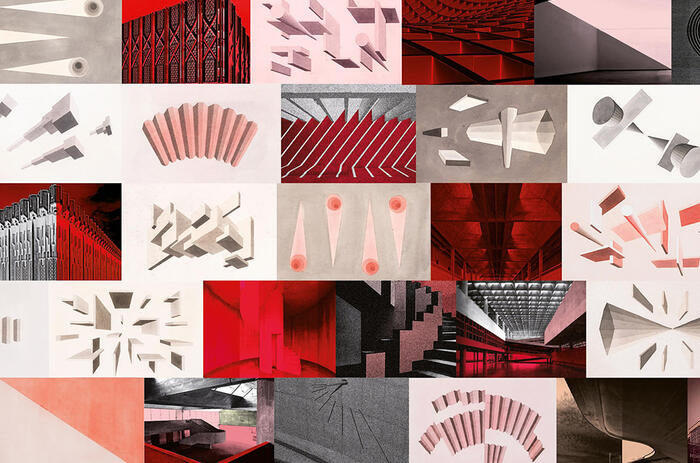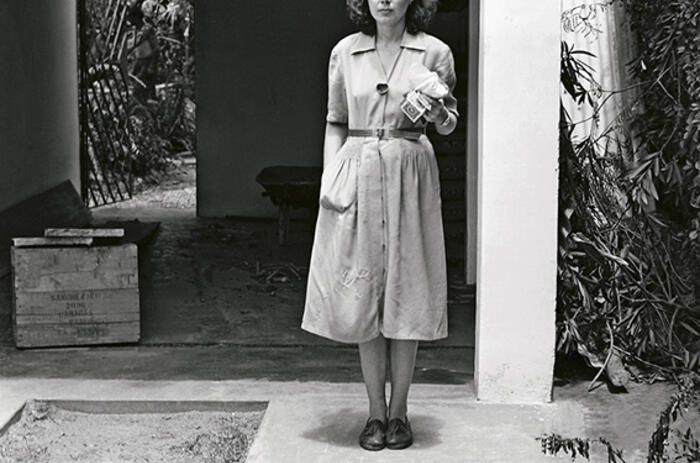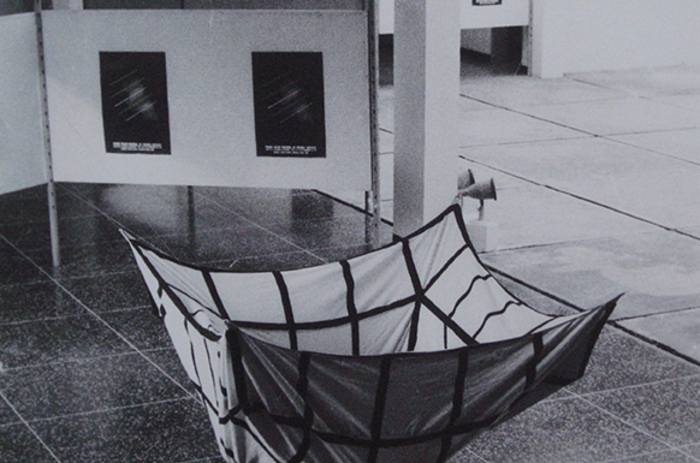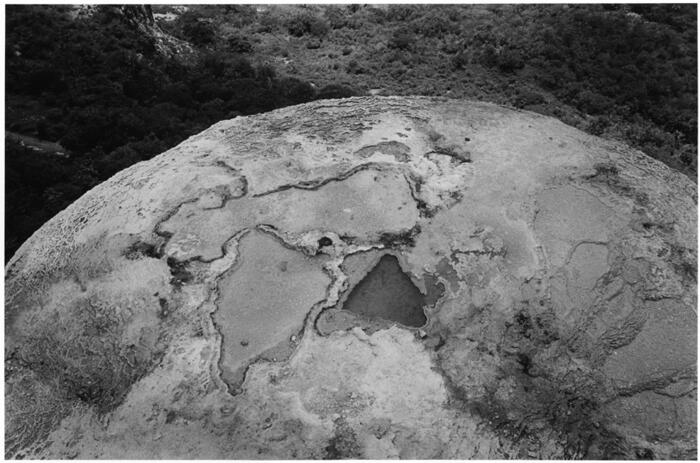Reviews
![Wifredo Lam, La Jungla [The Jungle], 1943. The Museum of Modern Art, New York. Wifredo Lam, La Jungla [The Jungle], 1943. The Museum of Modern Art, New York.](/var/artealdia_com/storage/images/resenas/wifredo-lam-o-la-modernidad-transcontinental.-centre-georges-pompidou-paris/566268-2-esl-AR/Wifredo-Lam-O-la-modernidad-transcontinental.-Centre-Georges-Pompidou-Paris_home_ppal.jpg)
Wifredo Lam: O la modernidad transcontinental. Centre Georges Pompidou, París
The exhibition displays the different stages of the long journey that was Lam’s life as well as the varying courses of his production.

Josefina Guilisasti: A Matter of Perception. Cecilia Brunson Projects, Londres
Josefina Guilisasti's work restores the anthropological, historic, and cultural value of objects that no longer have a voice.

Studio R & R: Ceci n'est pas happening. Monoambiente. Buenos Aires
The exhibition was not a happening but that happened: a project featuring the architecture of emotion rendered as a portable party thanks to the abracadabra that completed the sound decoration.

Augusto Zanella & Luis Rodríguez: Mambo. Miranda Bosch, Buenos Aires
The space directed by Eleonora Molina presents an exhibition that has the optical illusions as starting point.

Matias Duville: Arena Parking. Centro Cultural Recoleta, Buenos Aires
Duville traslada al espacio tridimensional ese mapa mental de motivos que caracterizan su obra.

Christian Carle Catafago: Monumentos a la deriva. Praxis Arte Internacional. Buenos Aires
Carle Catafago’s vistas celebrate the extraordinary landscapes south of the South, and convey, at the same time, their disturbing fleetingness.

Martin Legón: Las fuerzas productivas. Barro Arte Contemporáneo, Buenos Aires
We could feel that the whole exhibition becomes a poem, that as soon as it anchors us to a meaning and an experience, it immediately produces a new estrangement to make way for another meaning and another experience.

Amadeo Azar & Jorge Miño: Los restos del Triunfo. Fundación Klemm, Buenos Aires
Azar and Miño’s exhibition is not a literal commentary on “the remains of triumph;” its musicality opens up other horizons.

In fraganti. Fotografía y pintura. ArtexArte. Buenos Aires
Arte x Arte debuts its new stage as a foundation with an exceptional exhibition that investigates the intersections between painting and photography.

Francisco Medail: Parte. Studio 488, Buenos Aires
Medail presents an exhibition in where debate is the obsessions with perfection with roots in romantic thinking of a documentary photography that aspires to be ontology: to show the essence of things exactly as they are.

Adriana Lestido: Mexico. Rolf Art, Buenos Aires
The exhibitionfeaturing works by the photographer Adriana Lestido at Rolf Art, displays two impressive and beautiful photographic essays, developed in Mexican territory in 2010.

Vik Muñiz: Buenos Aires. Muntref
In the work of Vic Muniz, the materials have an economy, a social and political history, or a technology that begs to be included in the discourse.

Alfredo Cortina: Photographer. Museo de Arte Contemporáneo del Zulia, Maracaibo
Cotina was not a professional photographer but through the lens of his camera he captured the loneliness, the fog and the beauty of the everyday in a way that had never been seen before.

Abstraction and Constructivism: Continuity and Breakdown of Latin-American Modernity. Durban Segnini, Miami
Durban Segnini Gallery celebrates its twenty۔third anniversary at the local level and forty۔five years of existence, with an alluring collective exhibition.

Eugenio Espinoza: Unruly Supports. PAMM, Miami
The exhibition underscores the work developed by the artist during the 1970s, when his proposal became an unequivocal turning۔point within the tradition of modern Venezuelan art.

Mateo Tannatt: Horse. Gallery Diet, Miami
There are no frontal or precise ideas in this show; what prevails at all times is a tangential, oblique discourse.

Yoan Capote: Collective Unconscious. Jack Shainman, New York
Yoan Capote’s exhibition inhabits binary spaces. Two galleries of work explore two seemingly contradictory themes: physical and mental suppression, and human resilience.

Lucía Pizzani: A Garden for Beatriz. Cecilia Brunson Projects
Lucía Pizzani’s exhibition at Cecilia Brunson Projectsfeatures a series of four works revolving around the relationship between nature, gender and materiality.

Amadeo Azar & Jorge Miño
Amadeo Azar’s (Argentina, 1972) watercolors and Jorge Miño’s (Argentina, 1973) digital photographs converge in the utilization of a geometric language in Los Restos del Triunfo, a show featured at Fundación Jorge F. Klemm

Eugenio Espinoza
Eugenio Espinoza: Unruly Supports (1970-1980) constitutes a rigorous exhibition that embarks the viewer on an exploration of Eugenio Espinoza’s (San Juan de los Morros, 1950) radical proposal. Curated by Jesús Fuenmayor, the exhibition is composed for more than fifty works that include paintings, photographs, sculptures, postcards and documentations of performances and interventions,

Yoan Capote
Yoan Capote’s Collective Unconscious inhabits binary spaces. Two galleries of work explore two seemingly contradictory themes—physical and mental suppression, and human resilience.

Matias Duville
An impressive topography of tamped down asphalt showing reliefs and planar areas extends throughout the main exhibition room of the Recoleta Cultural Center. Argentine artist Matías Duville’s (Buenos Aires, 1974) enigmatic and attractive installation lends its name to the exhibition: Arena Parking.

Adriana Lestido
The exhibition México, featuring works by the notable photographer Adriana Lestido (Argentina, 1955) at Rolf Art, displays two impressive and beautiful photographic essays, developed in Mexican territory in 2010. The interview México – which lends its title to the exhibition – is the product of an invitation from the Mexican photographer and curator Patricia Mendoza, to capture photographs of forest areas on the occasion of the International Year of Forests.

Lucía Pizzani
Beatrix Potter was an English scientist and illustrator who investigated the reproduction and taxonomy of fungi. In spite of her having developed important biological-reproductive theories, her scientific work could never be carried out professionally for reasons of gender.

Roberto Huarcaya
Since his emergence in the visual arts scene, the photographer Roberto Huarcaya (Lima, 1959) has distinguished himself by the ambition of his projects, in which photography has often been associated with other creative mediums in very solid combinations that have elicited intense responses from different audiences.

Expanding Time
The same day that I began writing this text, I saw on a video featured by an online Argentine newspaper, a TransAsia Airways plane cross a Taipei highway with a wing pointed towards the ground and another towards the sky, destroy the front of a taxi and crash on a river.

Joaquín Torres-García
As a celebration of its 25 years of existence, the Instituto Valenciano de Arte Moderno (IVAM) explores a part of the creation of Latin America through 127 works of its collection, under the special influence of Uruguayan artist Joaquín Torres-García.

Alejandro Kuropatwa
The images of Fuera de foco, works by Alejandro Kuropatwa (Buenos Aires, 1956-2003), presented at Vasari gallery, were shot and produced in New York, where the artist lived for around six years.

Allora & Calzadilla
“Talking to you makes me think that Man’s descent from the apes hasn’t even started yet.”

Carlos Cruz Diez
In 1980, the exhibition Didáctica y dialéctica del color, by master of color Carlos Cruz-Diez (Venezuela, 1923), was held at the Universidad Simón Bolívar (USB), Caracas.



